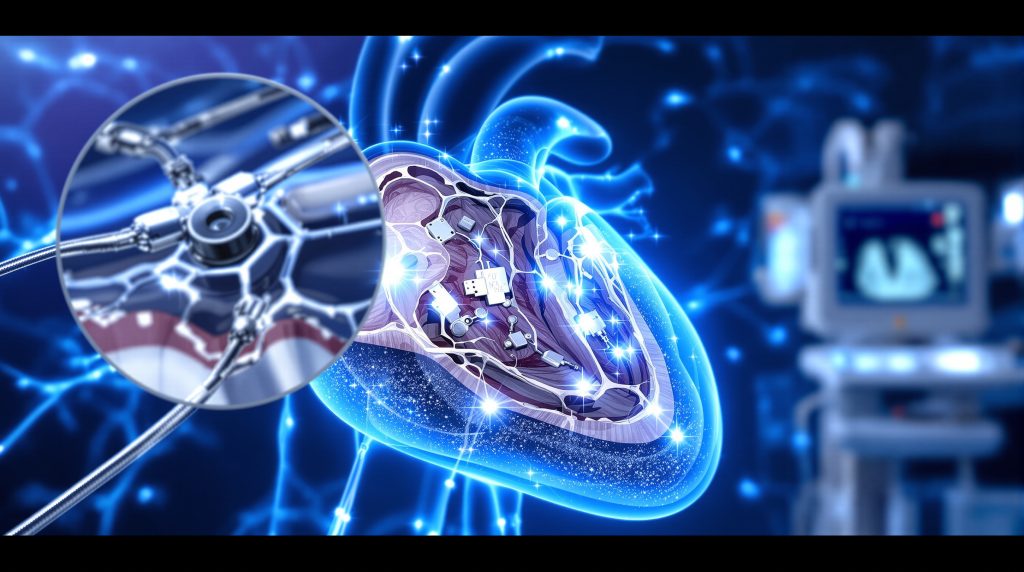Platinum's Critical Role in Medical Technology: How Pacemakers Depend on This Precious Metal
Platinum stands as a cornerstone material in advanced medical technology, particularly in life-saving cardiac devices like pacemakers. Its unique combination of properties makes it irreplaceable in these applications, ensuring reliable performance in the most demanding environments—the human body. This article explores platinum's crucial role in medical technology, with a special focus on how medical demand for platinum in pacemakers continues to drive innovation and investment in this precious metal.
What Makes Platinum Essential for Medical Applications?
Platinum distinguishes itself in the medical field through an exceptional combination of properties that few other materials can match. Its biocompatibility ensures the body doesn't reject implanted devices, while its remarkable corrosion resistance prevents degradation even after years inside the body's harsh chemical environment.
For implantable devices like pacemakers, these qualities aren't merely advantageous—they're essential for patient safety and device longevity. The metal's chemical inertness prevents toxic reactions, a critical factor for long-term implants that must remain in the body for many years.
Additionally, platinum offers dimensional stability that ensures devices maintain precise specifications over time. This stability, combined with excellent electrical conductivity, creates the ideal material for components that must reliably transmit signals within the body.
According to industry sources cited by Mining Weekly in September 2025, platinum is "the precious metal of choice when it comes to medical technology" specifically because of its comprehensive suite of properties including chemical inertness, corrosion resistance, biocompatibility, temperature and dimensional stability, and electrical conductivity.
Technical Properties That Make Platinum Irreplaceable
Platinum's technical advantages in medical applications include:
- Radiopacity: Blocks X-rays, enabling physicians to visualize implanted devices during and after procedures
- Non-allergenic properties: Extremely low incidence of allergic reactions compared to other metals
- Thermal stability: Maintains properties across a wide temperature range
- Catalytic properties: Useful in certain specialized medical applications
- Workability: Can be formed into complex, precise shapes needed for miniaturized components
How Are Pacemakers Revolutionizing Cardiac Care?
Pacemakers represent one of modern medicine's most significant innovations, providing life-saving therapy for patients with various heart rhythm disorders. These sophisticated devices continuously monitor heart activity and deliver precisely calibrated electrical impulses when needed to maintain proper cardiac rhythm.
The global impact is substantial—approximately one million pacemakers are implanted annually worldwide, according to the World Platinum Investment Council. As populations age and cardiac care advances, this number continues to grow steadily, driving consistent demand for the platinum components essential to their function.
Modern pacemakers have evolved from simple rhythm-maintaining devices to sophisticated systems that can:
- Adjust heart rate based on physical activity levels
- Collect and transmit data to healthcare providers
- Automatically adjust settings based on changing patient needs
- Coordinate contractions between different heart chambers
Why Can't Other Metals Replace Platinum in Pacemakers?
Platinum's unique combination of properties makes it irreplaceable in pacemaker electrodes and leads:
- Biocompatibility: Unlike many metals, platinum doesn't trigger immune responses or tissue rejection
- Electrical conductivity: Ensures reliable transmission of the precise electrical signals needed to regulate heartbeats
- Corrosion resistance: Withstands the body's internal environment for the device's entire lifespan
- Radiopacity: Allows physicians to visualize the device under X-ray imaging for proper placement and monitoring
While medical researchers have explored alternatives including gold, silver, titanium, and various alloys, none offer platinum's complete package of properties. This explains why, despite its high cost, platinum remains the gold standard for critical pacemaker components.
The World Platinum Investment Council identifies platinum as "the only material suitable for the electrodes required in pacemakers," emphasizing its irreplaceable role in these life-saving devices.
How Has Medical Demand for Platinum Evolved?
The medical sector's appetite for platinum has shown remarkable consistency and growth over time. Since 2013, demand has increased at a compound annual growth rate of approximately 3%, with 2025 projected to see an additional 4% growth according to industry forecasts published in Mining Weekly.
This steady trajectory has positioned medical applications as a significant consumer of platinum, representing approximately 4% of total global platinum demand as of 2024. Recent gold price analysis suggests that platinum may follow a similar upward trend due to increasing industrial demand across multiple sectors.
Industry analysts forecast that medical demand for platinum in pacemakers will reach approximately 320,000 ounces in 2025—a new high point for the sector. This growth reflects both increased production of existing platinum-dependent medical devices and the development of new applications that leverage platinum's unique properties.
What Drives the Consistent Growth in Medical Platinum Demand?
Several factors contribute to the steady increase in medical platinum consumption:
- Aging global population: As demographics shift toward older populations, the incidence of conditions requiring pacemakers increases
- Expanded healthcare access: More patients worldwide can access advanced cardiac care
- Technological advancements: New medical devices and treatments often incorporate platinum components
- Miniaturization trends: Smaller, more sophisticated devices may use less platinum per unit but are being produced in greater numbers
- Expanding applications: Researchers continue to find new medical uses for platinum's unique properties
Unlike automotive demand for platinum, which can fluctuate with vehicle production cycles, medical demand shows more stability and predictable growth patterns, making it an increasingly important sector for platinum markets and gold investment trends.
What Makes Platinum Coating Technology Important in Medical Devices?
Beyond complete platinum components, advanced platinum-based coating technology plays a crucial role in various medical applications. These specialized coatings provide uniform layer distribution even on complex geometries, making them ideal for miniaturized components.
Advanced coating technologies utilize solutions with lower sulfuric acid content, making them less aggressive toward the substrate materials. This characteristic allows for easier application on sensitive materials without compromising their integrity.
According to technical information published by Umicore in 2025, platinum coating technology is based on "a strong acidic solution with a comparatively low sulfuric acid content, which makes it less aggressive towards the substrate to be coated and allows easier application on sensitive materials."
Which Medical Applications Benefit from Platinum Coatings?
Platinum coatings enhance numerous medical technologies:
- Sensors: pH, glucose, oxygen, and electrocardiogram measurement devices benefit from platinum's smooth, non-porous surfaces that improve signal quality and ensure reliable measurements over extended periods
- Catheters: Platinum markers enable precise positioning under X-ray guidance during critical procedures
- Neurovascular devices: Clot-retrieval devices and stents for treating strokes or aneurysms utilize platinum's radiopacity
- Ablation catheters: Electrodes benefit from platinum's high conductivity and corrosion resistance
The coating process allows manufacturers to apply platinum's beneficial properties to complex components without requiring solid platinum construction, potentially reducing costs while maintaining performance.
How Do Platinum Components Support Neurovascular Procedures?
Platinum's radiopacity—its ability to block X-rays and appear clearly on imaging—makes it invaluable for neurovascular interventions. When treating conditions like strokes or aneurysms, physicians must navigate delicate blood vessels with extreme precision.
Platinum markers and components allow for real-time visualization during these procedures, enabling doctors to:
- Position catheters accurately within the brain's vascular system
- Deploy stents precisely in narrow or blocked arteries
- Manipulate clot-retrieval devices with confidence
- Monitor the placement of implanted devices during follow-up care
This capability significantly reduces procedural risks and improves patient outcomes in some of medicine's most challenging interventions. As neurovascular procedures become more common with aging populations, demand for platinum components in this field continues to grow, further supporting the mining innovation trends necessary to meet this demand.
What Does the Future Hold for Medical Platinum Applications?
The outlook for platinum in medical technology remains strong, with several trends pointing toward continued growth:
- Expanded applications: Research continues to identify new medical uses for platinum's unique properties
- Technological refinement: Advances in coating techniques and alloy development enhance platinum's effectiveness
- Growing global demand: Increasing access to advanced healthcare worldwide drives demand for platinum-containing devices
- Aging demographics: The rising incidence of cardiac conditions requiring pacemakers supports long-term demand growth
While platinum faces supply constraints due to its rarity and concentrated production (with South Africa being the primary source), its irreplaceable role in medical technology ensures continued investment in securing reliable critical minerals supply chains.
Environmental and Recycling Considerations
As medical platinum demand grows, so too does interest in sustainable sourcing and recycling:
- Explanted devices are increasingly collected for metal recovery
- Improved recycling technologies now recover up to 98% of platinum from medical devices
- Manufacturers are exploring ways to maintain performance while optimizing platinum usage
- Ethical sourcing initiatives address environmental and social impacts of platinum mining, with mine reclamation innovation playing a key role in mitigating these impacts
How Does Platinum Compare to Other Precious Metals in Medical Applications?
While several precious metals have medical applications, platinum stands apart for specific uses:
| Metal | Key Medical Properties | Primary Applications | Limitations |
|---|---|---|---|
| Platinum | Biocompatibility, electrical conductivity, corrosion resistance, radiopacity | Pacemakers, catheters, neurovascular devices, sensors | High cost, limited supply |
| Gold | Biocompatibility, malleability, corrosion resistance | Dental work, anti-inflammatory treatments, diagnostic tools | Lower electrical conductivity than platinum |
| Silver | Antimicrobial properties, electrical conductivity | Wound dressings, antimicrobial coatings | Potential for tarnishing, less biocompatible than platinum |
| Titanium | Biocompatibility, strength-to-weight ratio | Orthopedic implants, dental implants | Less electrically conductive than platinum |
This comparison highlights why platinum remains irreplaceable for specific medical applications despite its premium cost. No other material offers its precise combination of properties for critical applications like pacemaker electrodes.
What Should Investors Understand About Medical Platinum Demand?
For investors considering platinum markets, medical demand represents a stable growth sector less vulnerable to economic cycles than other platinum applications. Unlike automotive catalytic converters, which fluctuate with vehicle production, medical demand for platinum in pacemakers shows consistent long-term growth.
Key investment considerations include:
- Steady growth trajectory: The 3% compound annual growth rate since 2013 demonstrates reliable expansion
- Inelastic demand: Medical applications cannot easily substitute other materials for platinum
- Innovation potential: New medical technologies may create additional platinum demand
- Supply concentration: South Africa's dominance in platinum production creates potential supply risks
While medical applications represent a smaller percentage of overall platinum demand compared to automotive uses (approximately 4% versus 40%), they provide important diversification within the platinum market and contribute to the metal's long-term value proposition.
Investment perspective: Medical platinum demand provides an important baseline of consistent consumption that helps stabilize the overall platinum market, making it a factor worth considering in long-term platinum investment strategies.
FAQ: Platinum in Medical Technology
How much platinum is typically used in a single pacemaker?
While quantities vary by device design, modern pacemakers typically contain between 0.1 and 0.3 grams of platinum, primarily in the electrodes and leads that contact heart tissue.
Can recycled platinum be used in medical devices?
Yes, recycled platinum that meets medical-grade purity standards can be used in medical devices. The recycling process must ensure all contaminants are removed to maintain biocompatibility.
Are there environmental concerns with medical platinum mining?
Platinum mining does have environmental impacts, including significant water usage and energy consumption. However, the medical industry's relatively small share of overall platinum demand means its environmental footprint is proportionally limited.
How long do platinum components in pacemakers last?
Modern pacemakers with platinum components typically function reliably for 7-15 years before replacement is needed, with the platinum elements often maintaining their integrity even beyond this timeframe.
Are there any allergic reactions to platinum in medical implants?
Platinum allergies are extremely rare, which is one reason the metal is so valued for implantable devices. The few documented cases of platinum sensitivity typically involve jewelry rather than medical implants.
Key Takeaways on Platinum's Medical Importance
Platinum's role in medical technology, particularly in pacemakers, represents a perfect example of how a material's unique properties can make it irreplaceable in critical applications. Despite its high cost and limited supply, platinum continues to be essential for devices that save and improve countless lives worldwide.
The steady growth in medical demand for platinum in pacemakers—projected to reach 320,000 ounces in 2025—reflects both the ongoing importance of existing applications and the development of new technologies that benefit from platinum's exceptional properties.
For patients, healthcare providers, and investors alike, understanding platinum's crucial role in medical technology provides valuable insight into both current applications and future possibilities for this remarkable metal.
Interested in the Next Big Mineral Discovery?
Discover how platinum's steady demand growth in medical technology could influence the mining sector by exploring Discovery Alert's proprietary Discovery IQ model, which provides real-time notifications on significant ASX mineral discoveries. Visit the discoveries page to understand how major mineral discoveries can lead to substantial market returns.




